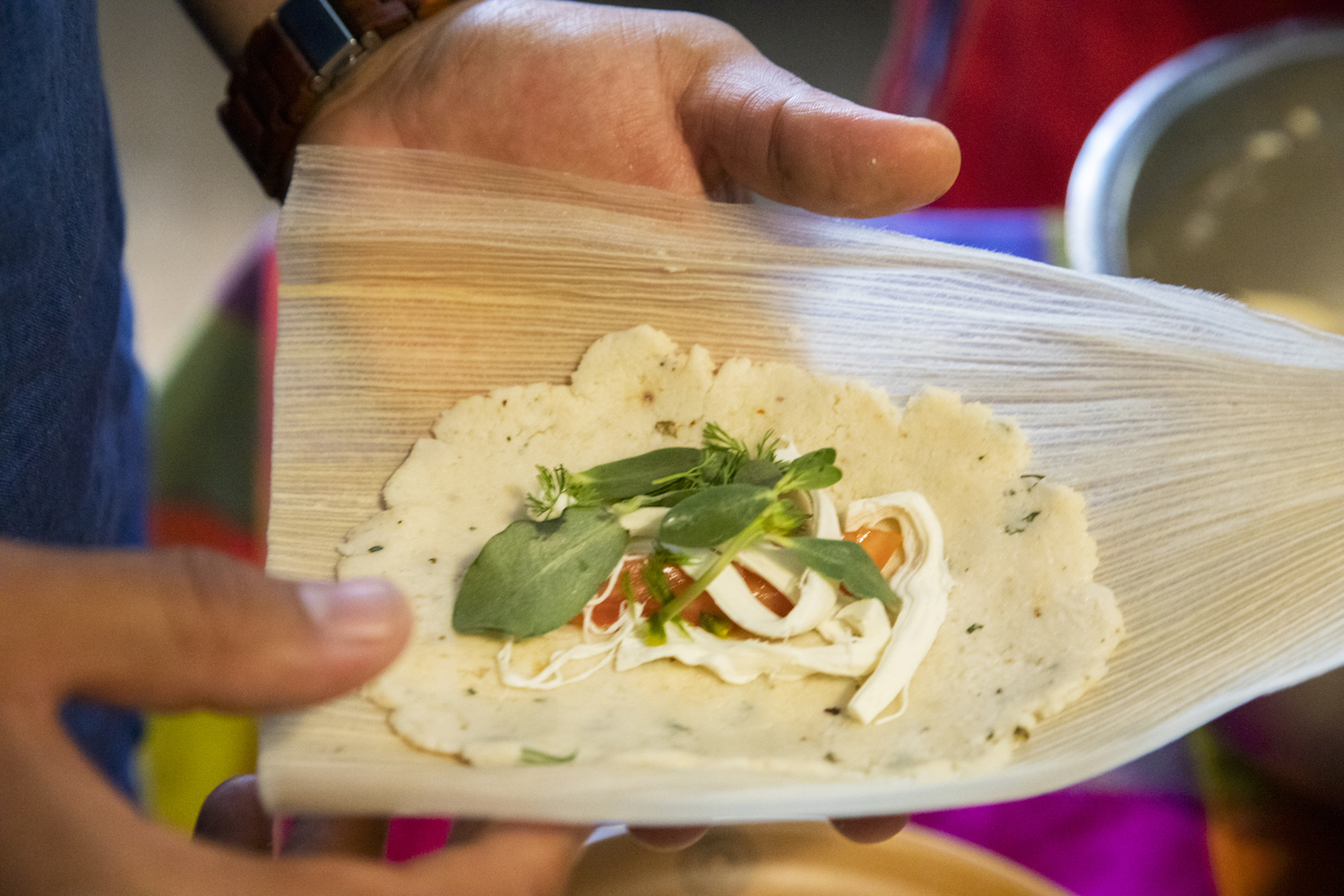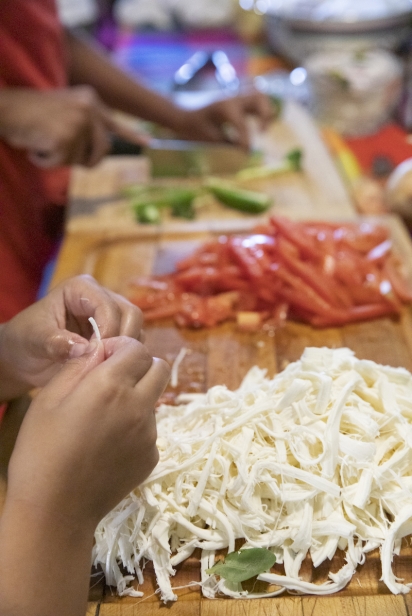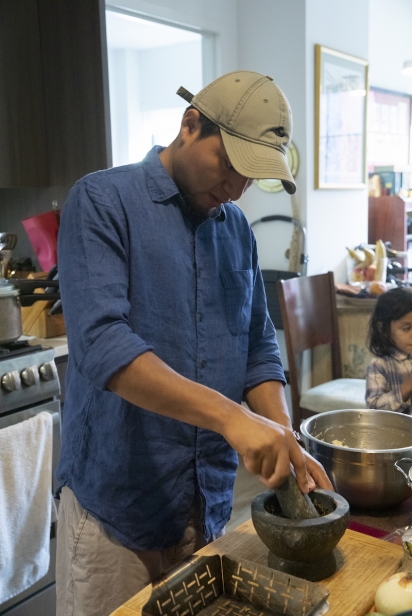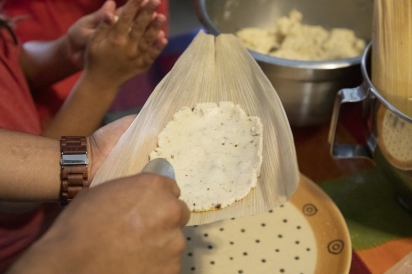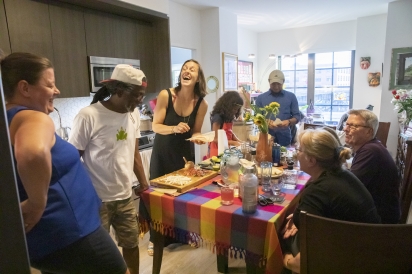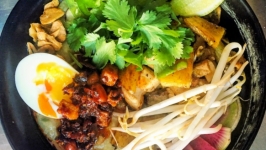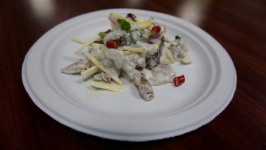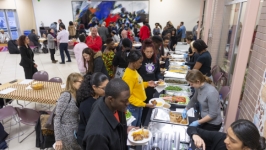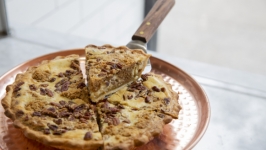The Art of the Tamalada
Omar Bravo has lived in the United States for 15 years, but ask him about tamales and in a second he is transported. Suddenly, he’s a kid back in Oaxaca, able to recall all the sights, sounds, smells and tastes of the tamale-making parties, called tamaladas, that were a holiday fixture in his family and community.
“Tamaladas are very traditional in Mexico,” he explains, “and everyone in the family has to be involved. Your mom, your abuela and your tías … they all get together, sitting in the kitchen or outside, having a conversation and making tamales as the kids and cousins all play. The tamaladas are one of my best memories from my childhood. I remember seeing my mom happy, watching her talking and cooking and knowing that my dad and my tíos were at work and they’d come home eager to eat the tamales.”
There is no single recipe for tamales, says Bravo; much like that other iconic Mexican dish, mole, there are nearly endless regional and familial variations. And sometimes, what a family stuffs into its tamale depends entirely upon what they have on hand in their refrigerator or pantry. In Mexico, there are only two real constants: the base is a corn masa, or dough, and once the additional ingredients are mixed into it, the pillow-shaped mass is wrapped into a dried corn husk that has been soaked in water until it is pliable.
“You can really put anything—chicken, beef, pork, vegetables, cheese—into a tamale,” Bravo explains, but his mom’s specialties—shredded chicken and mole tamales and cheese and cactus paddle-stuffed tamales—were a crowd-pleasing favorite year after year.
Tamaladas can be held in any season, Bravo says, but they’re traditionally associated with Christmas because it’s hard to get everyone together at other times of the year. “With everyone working,” he says, “you really have to wait for a time of the year when all the adults get a break. Christmas is ideal for this reason.”
Not surprisingly, tamales are the main event at a tamalada, but what you wash them down with is important, too. Bravo says that his uncles would bring alcohol for the adults and soda for the kids, and that the women would make agua fresca, with watermelon and pineapple being favorite flavors.
Does Bravo ever make tamales here in New York? “It’s better to buy them from a woman on a corner in Queens,” he says, laughing. The chef, now a resident of Astoria, recalls living in Elmhurst and dashing down from his apartment when a woman came strolling around his block at 4am, selling tamales and steaming champurrado, a corn-based hot chocolate drink. These are his favorite New York City tamales, the ones that remind him most of home.
If you don’t have a tamale vendor circling your block and selling her wares at the crack of dawn, you can still often find one selling hot tamales from a cooler propped on a grocery cart in Corona Plaza, that great, informal, open air food hall with all sorts of Latin American culinary specialties for sale.
Restaurant tamales? They’re best avoided, in Bravo’s opinion. “I’ve developed tamales with fancy sauces for an upscale Manhattan restaurant,” he adds, noting that it can be hard to find good tamales at local restaurants, even in Queens. Maybe, he muses, that’s because it takes a Latin mom to really get the recipe just right.
“Even when I developed my tamales,” he said, “I had to call my mom a lot of times to get her advice, especially for working with the masa so that it didn’t turn out too hard.” One of her secrets? Bacon grease or pork lard. “It just gives the tamales a special extra something,” he says.
And as for the issue of side dishes, should tamales be served with salsa? Bravo hews to tradition, saying that when fresh tamales come steaming out of the pot, they should just be freed from their husk and eaten straight. But he has a pro tip for any leftovers. “I always save tamales for the next morning and take them out of the husk and make them crispy in a pan. And that’s when I have salsa on the side—to have a little extra spice.
If you’re salivating now and you feel like organizing your own tamalada, Bravo recommends sourcing your ingredients at “100% Mexican deli-stores,” including one on Astoria Boulevard and another one on Broadway and 42nd Street. “These are small stores, but they bring me right back to my hometown,” Bravo says, “with all their chiles and dried herbs and corn husks,” everything you need for making perfect tamales right here in Queens.


